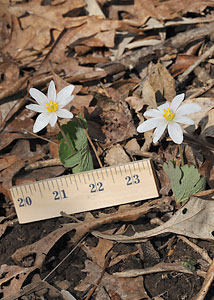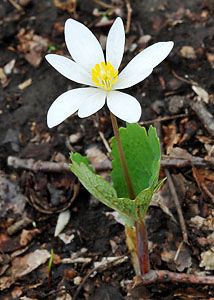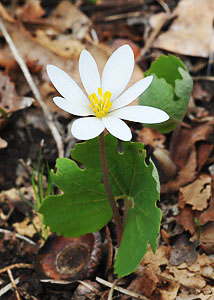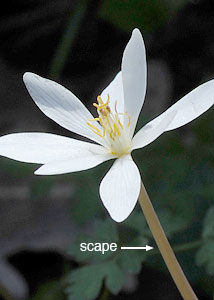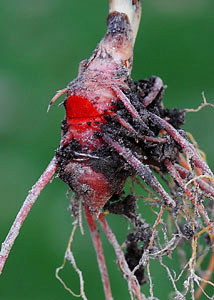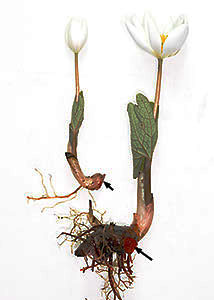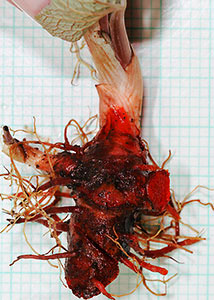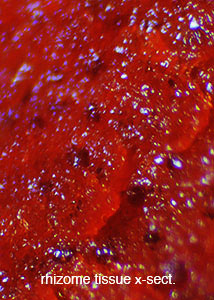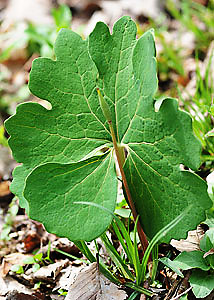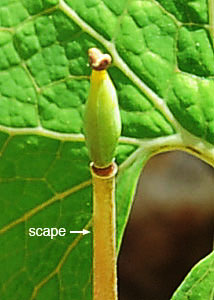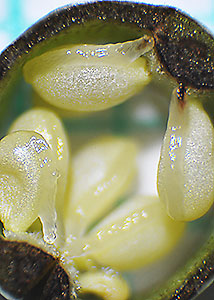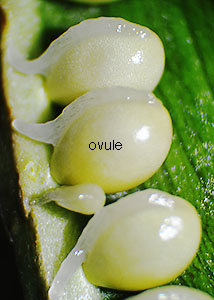Scientific Name: Sanguinaria canadensis ([Lat] sanguis: blood])
Common Name: Bloodroot
Origin: NATIVE
Notes: Bloodroot is sometimes called a springtime ephemeral. The flower qualifies; but, the leaf may not since it lasts well into summer. Some writers prefer to call such plants ephemeroids. The rhizome and roots are red when cut which is the characteristic responsible for the plants common name. The sap in the rhizome and roots contains the toxin sanguinarine. Don't ingest any part of the plant and if you handle the roots wash your hands soon afterwards. The toxin is being evaluated for possible medicinal uses.
Additional references:
1, 2, 3, 4, 5.
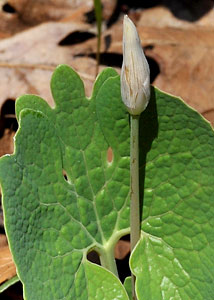
Field Marks for Identification:
Flowers: early April; terminal on scape; sepals 2 (deciduous when flowers open); petals 8-12 oblong white or pinkish; stigma 2 grooved, style absent or indistinct; ovary bicarpellate and unilocular; fruit a capsule
Leaves: a single large leaf often clasping the flower scape, petiole up to 15cm, blade orbiculate palmate 5-7 lobed, margins scalloped.
Glossaries of botanical terms: 1, 2, 3, 4, 5, 6, 7, 8, 9.

